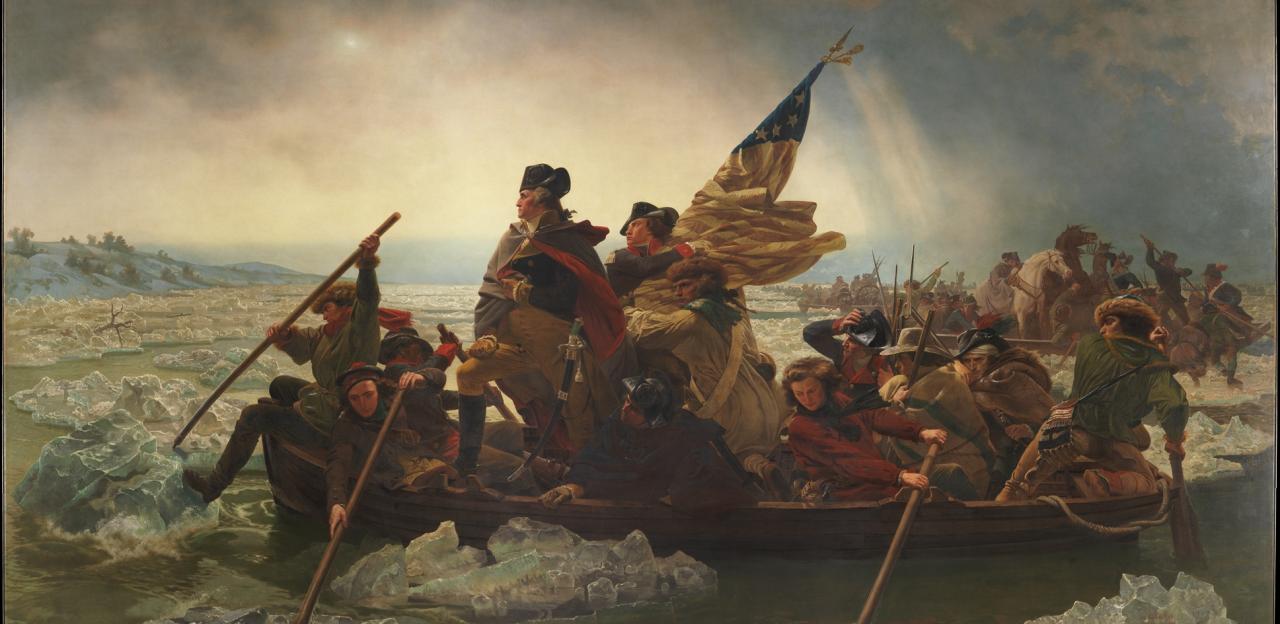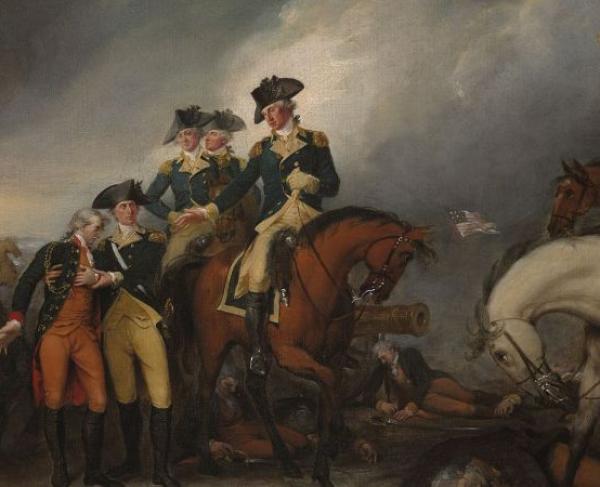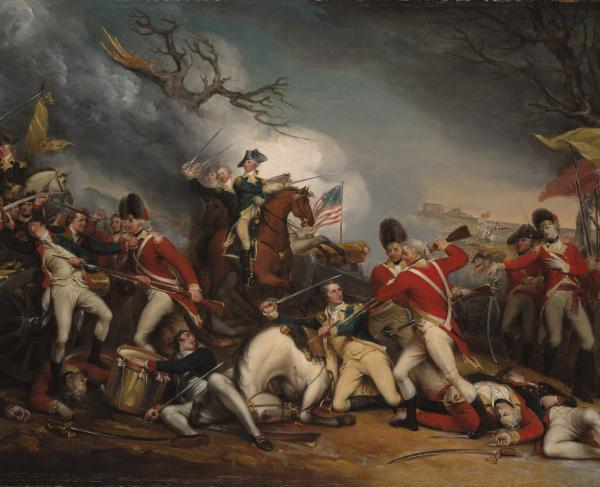Trenton

Christmas 1776 proved bleak for the fledging Continental Army and their commander, George Washington. Since the previous summer, they had been pummeled by the British under Lord William Howe at every turn. Driven across New Jersey and now huddled in a frozen encampment in Pennsylvania on the western banks of the Delaware River, Washington was desperate. His men were poorly clothed, in ill health, starving, and many of their enlistments were due to expire. In order to keep his band together and improve morale, Washington sought to take the initiative from Howe. He knew that across the Delaware River, encamped and housed in Trenton, New Jersey, was a garrison of German Hessians. He thought that attacking the Hessians at dawn on the day after Christmas was a gamble worth taking. If the Americans won, they would not only defeat a force of European troops, on their own terms, but they would also secure much-needed supplies and provisions.
His plan was audacious. He would move his 2,400 man force, including horse and eighteen cannons, across the ice-choked Delaware River, divide and strike in three columns from the north at sunrise on December 26. The task of ferrying everything across the Delaware River fell on General John Glover and his rugged band of Massachusetts fishermen. After revealing his plan at a council of war, Washington ordered as many boats as possible be located and ferried to his position ten miles above Trenton. The freezing soldiers of the Continental Army were given meager provisions for three days and were not told the objective, only that the password was, “Victory or Death.”
The moon was full on Christmas night. As men and material loaded into the transports Henry Knox, Washington’s Chief of Artillery recalled in a letter to his wife, “Floating ice in the river made the labor almost incredible.” The river’s strong and swift current complicated matters, as did a nasty nor’easter which began pelting everyone with snow, freezing rain and sleet, accompanied by a steady and stiff wind. By 2:00 am, Washington’s troops were across. “Perseverance,” wrote Knox, “accomplished what first seemed impossible."
On the outskirts of Trenton, Washington divided his army into three columns. General John Sullivan's command would approach Trenton along the River Road on the west edge of the town. To the center and the left Washington left those columns under the command of General Nathaniel Greene, who would enter the town by its two principal road arteries. It was to be a coordinated attack.
Delays in the crossing meant that it was daylight by the time they reached Trenton, but Washington did still achieve the surprise he sought. The storm that had delayed the crossing had provided a modicum of cover. The Hessian outposts on the edge of town were quickly overrun, and on cue the main body of troops from all sides rushed pell-mell into Trenton. Recalling the assault, one American officer said, “I never could conceive that one spirit should so universally animate both officers and men to rush forward into action.”
Knox’s guns sprang into action too, covering the length of the streets and permitting no avenue of escape for the stunned Hessians who poured out of their barracks to repel the invaders. Close quarters, hand-to-hand fighting raged in the narrow streets of a town now fully awake. Knox wrote, “there succeeded a scene of war of which I had often conceived but never saw before.” It was as if the pent-up rage of the Continental Army had been unleashed by the furies of war.
For two hours the battle raged with the Americans never relenting. The Hessians pulled back in as orderly a fashion as they could through the streets of Trenton only to be surrounded by the Americans in a peach orchard on the outskirts. Hessian commander Col. Johann Rall attempted to rally his men, but it was of no use. They were demoralized and frightened. An American soldier felled Rall with one shot, mortally wounding him. The remaining Hessians threw down their weapons and pleaded for mercy.
The Hessians lost 22 men killed in the fight with another 86 receiving wounds and close to 900 were taken prisoner. The Americans also seized much-needed supplies, including additional cannons and 1,200 muskets. The Americans suffered only five casualties, all only wounded. Among them was eighteen-year-old James Monroe, future President of the United States, who suffered a severe wound in the shoulder. It was a stunning victory that proved a vital boost to the American cause when it desperately needed it.
Related Battles
5
905

